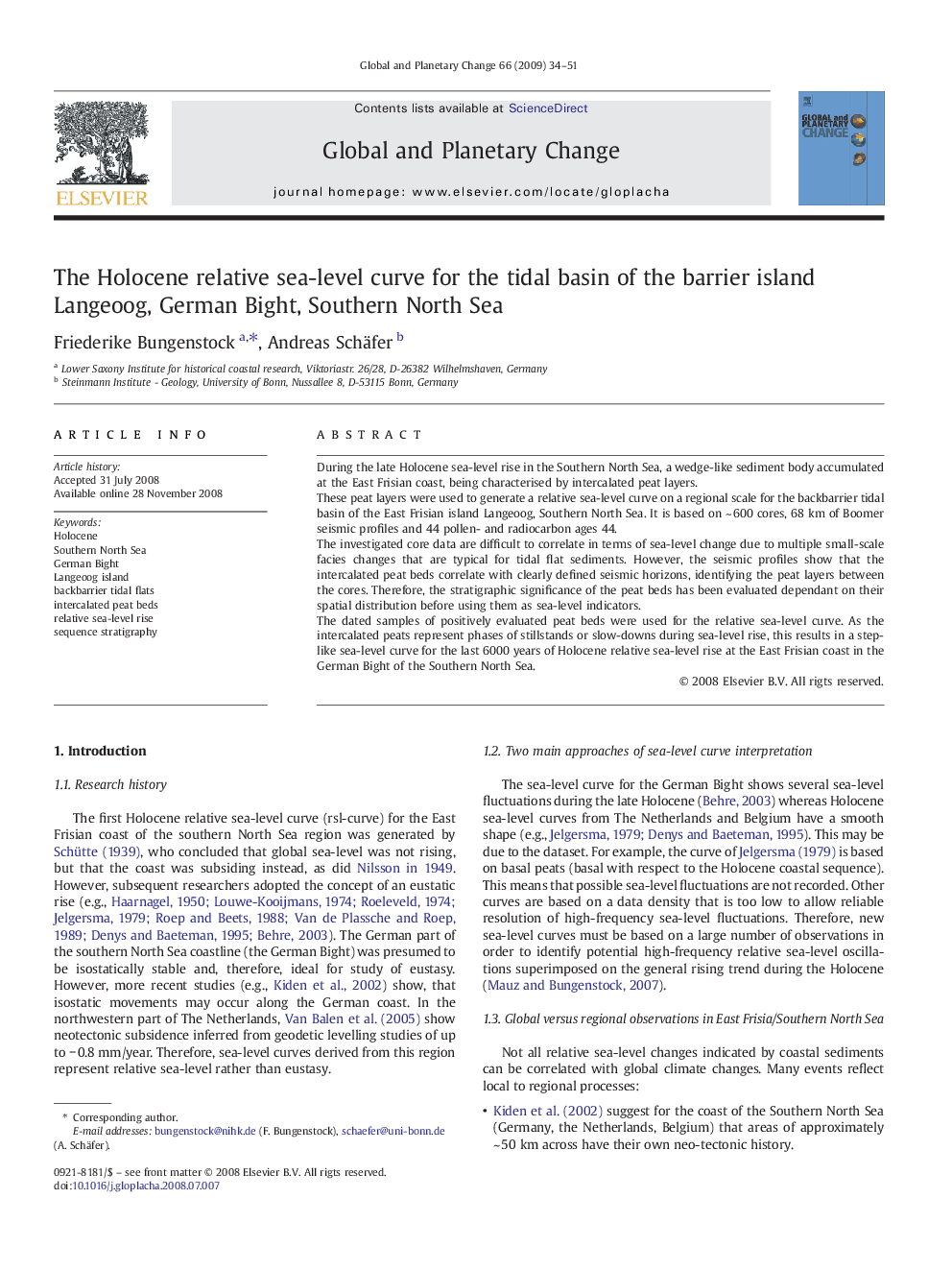| Article ID | Journal | Published Year | Pages | File Type |
|---|---|---|---|---|
| 4464083 | Global and Planetary Change | 2009 | 18 Pages |
During the late Holocene sea-level rise in the Southern North Sea, a wedge-like sediment body accumulated at the East Frisian coast, being characterised by intercalated peat layers.These peat layers were used to generate a relative sea-level curve on a regional scale for the backbarrier tidal basin of the East Frisian island Langeoog, Southern North Sea. It is based on ~ 600 cores, 68 km of Boomer seismic profiles and 44 pollen- and radiocarbon ages 44.The investigated core data are difficult to correlate in terms of sea-level change due to multiple small-scale facies changes that are typical for tidal flat sediments. However, the seismic profiles show that the intercalated peat beds correlate with clearly defined seismic horizons, identifying the peat layers between the cores. Therefore, the stratigraphic significance of the peat beds has been evaluated dependant on their spatial distribution before using them as sea-level indicators.The dated samples of positively evaluated peat beds were used for the relative sea-level curve. As the intercalated peats represent phases of stillstands or slow-downs during sea-level rise, this results in a step-like sea-level curve for the last 6000 years of Holocene relative sea-level rise at the East Frisian coast in the German Bight of the Southern North Sea.
